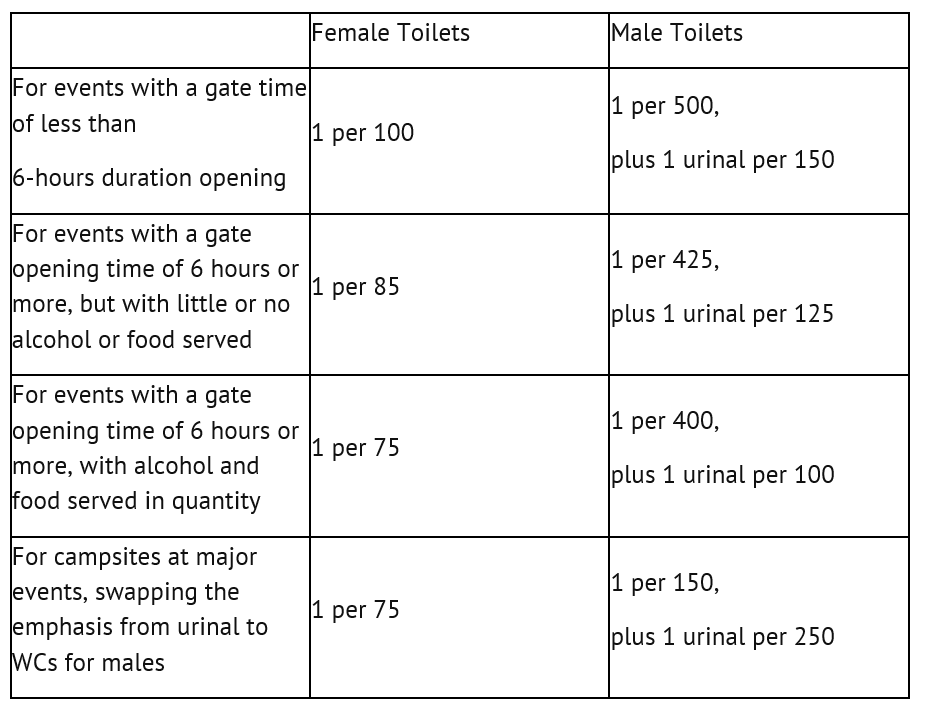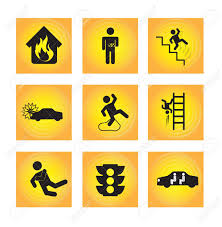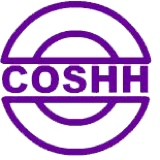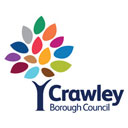Title Page
-
Site conducted
-
Event Title
-
Conducted on
-
Event Date
-
Prepared by
-
Location
Introduction
PLANNING AND PREPARATION
-
The success of an event is measured in many ways –but events must also be measured in terms
of safety. Event organizers have a duty of care to provide a safe working environment and to
ensure that people are not exposed to risks to their health and safety.
These checklists will provide a guide to many of the issues to be considered when organizing your
event. Depending on the nature of your event some of these issues may require more detailed
assessment and provision of information prior to going ahead.
CONSULTATION WITH STAKEHOLDERS
-
Stakeholders in any event include: event organizers; University staff, students, volunteers;
service and service providers e.g.: catering, amusement device owners /operators; emergency
services; facilities management (re: services, maintenance, rubbish/waste removal and
cleaning, space bookings, parking and vehicle movements); security.
Proactive planning by event organizers means nothing should be left to chance. Using a
systematic process of identification, assessment and control, relevant safety risks can eliminate
or minimize the risk of untoward outcome for the event and the organizer.
When planning your event, it is important to remember that each event is different; from the
type and number of people attending, to the nature of the event. Good planning means being
prepared well in advance and ensuring that safety is a priority throughout the event, including
initial pre-event set up and dismantle.
Event Details
-
Event Name
-
Event Description
-
Proposed Venue or Location (description)
- CBC Park
- Other Open Land
- Indoors
- Highways
- Local Roads
- Other
-
Location Address
-
Proposed Event Dates From
-
Proposed Event Dates To
-
Estimated Attendance Per Day (Max)
-
Total Attendance - Multi day event
Event Organizer Details
-
Group
-
Address
-
Main Contact Person
-
Position
-
Phone
-
Mobile
-
email
Key Event Contacts
Event Manager
-
Event Manager Name
-
Responsibilities
-
Contact details
-
Role
- Security
- Medical
- Stage Management
- Crowd Management
- Dafeguarding
- Other
-
Event Manager Name
-
Responsibilities
-
Contact details
-
Job Role
Suppliers
-
Organisation
-
Contact Name
-
Service
-
Contact details
-
Notes
Authorities (fire, police, first aid, etc.)
-
Organisation
-
Contact Name
-
Service
-
Contact details
-
Notes
Artists / Entertainment
-
Organisation
-
Contact Name
-
Service
-
Contact details
-
Notes
Venue Contact Details -Internal and External Venues
-
Name
-
Phone
-
email
-
undefined
EVENT ACCESS AND EGRES
-
Entry / Exit areas are clear and accessible for staff and <br>expected attendees
-
Entry / Exit area are adequate for emergency exit and <br>emergency services
-
Thoroughfares are well defined and clearly marked
TRAFFIC FLOW
-
Vehicle access onto grounds is required for set up and dismantling.
- Vehicle access required throughout
- Vehicle access required pre/post event
- No vehicle access required
-
Vehicle movement permitted
-
No vehicle movement permitted from
-
No vehicle movement permitted to
-
Clearly defined areas/paths for traffic – separated from <br>pedestrian thoroughfare
-
Controlled traffic flow and adequate signage for traffic <br>erected
-
Traffic management staff wear appropriate high visibility <br>protection and carry communication devices
-
Adequate parking areas to cater for the expected vehicle <br>numbers attending the event
-
Adequate parking supervision
-
Adequate training of traffic management staff, and are <br>traffic management staff are positioned in the correct <br>location as planned
-
All necessary permits and certification/licensing for traffic <br>management obtained.
AMENITIES
-
-
Adequate provision /location of toilets and hand washing <br>facilities -
-
Availability of drinking water for staff and attendees
-
Adequate facilities for food catering preparation and <br>clean up
-
Adequate shade from sun / availability of sunscreen as <br>required for staff or attendees
EVENT EMERGENCY PROCEDURES
-
Emergency Response Plan documented and in place
-
Emergency Response personnel trained to carry out plan <br>for event emergency
-
Current site maps available to all staff, emergency <br>services and other relevant parties
-
Map of site
Severe/Extreme weather
-
Is there a consideration on stopping the event in bad weather?
-
Is High wind considered where Temporary Structures are in place?
-
Which structures are considered?
- Stage
- Platform
- Lighting
- Marquee
- Gazebo
- Inflatables
- Rides
- Animal Enclosures
- Gantry
- Other temporary demountable structures
-
Have heatwave conditions been considered
Emergency Plan
-
Does the plan show how the organizer will communicate with the Emergency Services
Fire and explosion
-
Is there a plan on how to evacuate the site in case of fire?
-
Is there a designated Rendezvous point?
-
Will the stewards know what is expected
Terrorism
-
Does the plan have consideration for dealing with this
-
Is the organizer considered at greater risk from this threat?
Structural failure
-
Is there a plan in place to deal with the event of a structural failure or collapse?
Crowd surge/collapse
-
IS there any consideration on what to do if there is a crowd surge
Crowd Disorder
-
Has consideration been made to the causes of disorder?
-
Has consideration been made to mitigate against this?
-
What is being done?
Lighting Failure
-
Has consideration been given on how will attendees be guided from the event?
-
Is there an alternate means of providing emergency lighting?
FIRE PREVENTION
-
Suitable fire extinguishers / fire blankets are in <br>appropriate areas,
-
All staff and volunteers are aware of the fire evacuation <br>procedures relevant to the planned event
-
How will the alarm be raised?
-
Who will be told?
-
Who is responsible for calling the Emergency Services
-
Who will meet the Emergency Services and the rendezvous point?
-
Is there a pre determined message that should be given out over the public address system.
-
Temporary structures (marquees etc) have a suitable and sufficient Fire Risk Assessment
-
Which Don't
MEDICAL
-
First Aid Stations suitably located, clearly signed and <br>accessible
-
Recommended Medical Provision
-
This is based on the previous Purple Guide, including some locally relevant information and is for guidance only. It is vital that all risks are assessed fully and built into your Event Medical Risk Assessment and Medical Plan
-
(A) Nature of the event (Score just one category)
- Classical Performance (2)
- Agricultural/country show(2)
- State occasions (2)
- Public exhibition/Fete (3)
- Marine (3)
- Motorcycle display (3)
- Aviation (3)
- (3)VIP visits/summit (3)
- Music Festival (3)
- Marathon or 1/2 Marathon (4)
- Endurance Sport event e.g. Triathlon (4)
- Motor Sport (4)
- Torchlight Procession only (4)
- Bonfire/pyrotechnical display (4)
- Rock/Pop concert (5)
- New Year celebrations (7)
- Bonfire Event with torchlight procession & fireworks (7)
- Dance Music Event (8)
- Demonstrations/Marches/Political Events
-
Risk Category
-
(B) Venue
- Indoor (1)
- Stadium (2)
- Outdoor in confined location, eg park (2)
- Other outdoor, eg festival (3)
- Widespread public location in streets (4)
- Temporary outdoor structures (4)
- Includes overnight camping (5)
-
(C) Standing/seated
-
(D) Audience Profile
- Full mix, in family groups (2)
- Full mix, not family groups (3)
- Predominately young adults (3)
- Predominately children and teenagers (4)
- Predominately elderly (4)
- Full mix, rival factions (5)
-
Add A+B+C+D - Score
-
(E) Past History
- Good data, low casualty rate previously (Less than 0.25%) (-1)
- Good data, medium casualty rate previously (0.25 to 0.5%) (1)
- Good data, high casualty rate previously (More than 0.5%) (3)
- First event no data (3)
-
(F) Expected numbers
- < 1000 (1)
- < 3000 (2)
- < 5080
- < 10,000 (12)
- < 20,000 (16)
- < 30,000 (20)
- < 40,0240
- < 60,000 (28)
- < 80,000 (32)
- < 100,000 (42)
- < 200,000 (50)
- < 300,000 (58)
-
Add E + F Score
-
(G) Expected queuing or standing during the event
-
(H) Likely weather conditions (Outdoor Events)
- >20 degrees Celsius (3)
- 10-20 degrees Celsius (1)
- <10 degrees Celsius (2)
- Persistent rain (2)
-
(I) Proximity to *Trauma Unit (TU) or Major Trauma Centre (MTC)
-
Major Trauma Centre - RSCH Brighton
Trauma Units - Conquest, Redhill, Ashford, Worthing, Chichester & Tunbridge Wells -
(J) Profile of definitive care
- Choice of TU or MTC (less than 30 mins travel) (1)
- MTC (1)
- TU (2)
- Emergency Department (3)
-
(K) Additional hazards
- Carnival (1)
- Helicopters (1)
- Motor sport (1)
- Parachute display (1)
- Street Theatre (1)
-
(L) Additional on-site facilities
- Suturing (-2)
- X-Ray (-2)
- Minor Surgery (-2)
- Plastering (-2)
- Psychiatric/GP facilities (-2)
-
Add G+H+I+J+K subtract L (Score)
-
Add the total scores
-
4 x First Aiders to nationally recognised standards as laid out in Purple Guide
-
1x Ambulance - Fully equipped including defibrillator. At least one in three vehicles should be crewed by a paramedic
-
6x First Aiders - To nationally recognised standards as laid out in Purple Guide
-
2x Ambulance Personnel - Qualified to Paramedic, IHCD Technician, ECSW or ETA (St John or BRCS) standard
-
NHS Ambulance Manager - Visit - Suitably qualified Commander at appropriate level
-
1x Ambulance - Fully equipped including defibrillator. At least one in three vehicles should be crewed by a paramedic
-
8x First Aiders - Fully equipped including defibrillator. At least one in three vehicles should be crewed by a paramedic
-
2x Ambulance Personnel (Crew) - Qualified to Paramedic, IHCD Technician, ECSW or ETA (St John or BRCS) standard
-
1x Nurse or Paramedic - Currently registered by NMC or HCPC
-
NHS Ambulance Manager - Suitably qualified Commander at appropriate level - Visit
-
2x Ambulance - Fully equipped including defibrillator. At least one in three vehicles should be crewed by a paramedic
-
12x First Aiders - To nationally recognised standards as laid out in Purple Guide
-
4x Ambulance Personnel (Crew) - Qualified to Paramedic, IHCD Technician, ECSW or ETA (St John or BRCS) standard
-
1x Doctor (Or Paramedic Practitioner or Nurse Practitioner) - Suitably qualified, practicing and registered by GMC, NMC or HCPC
-
2x Nurse or Paramedic - Currently registered by NMC or HCPC
-
1x NHS Ambulance Manager Suitably qualified Commander at appropriate level
-
3x Ambulance Fully equipped including defibrillator. At least one in three vehicles should be crewed by a paramedic <br>
-
20x First Aider To nationally recognised standards as laid out in Purple Guide
-
6x Ambulance Personnel Qualified to Paramedic, IHCD Technician, ECSW or ETA (St John or BRCS) standard
-
2x Doctor (Or Paramedic Practitioner or Nurse Practitioner) Suitably qualified, practicing and registered by GMC, NMC or HCPC
-
4x Nurse or Paramedic Currently registered by NMC or HCPC
-
1x NHS Ambulance Manager Suitably qualified Commander at appropriate level
-
4x Ambulance Fully equipped including defibrillator. At least one in three vehicles should be crewed by a paramedic
-
40x First Aider To nationally recognised standards as laid out in Purple Guide
-
8x Ambulance Personnel Qualified to Paramedic, IHCD Technician, ECSW or ETA (St John or BRCS) standard
-
3x Doctor (Or Paramedic Practitioner or Nurse Practitioner) Suitably qualified, practicing and registered by GMC, NMC or HCPC
-
6x Nurse or Paramedic Currently registered by NMC or HCPC
-
2x NHS Ambulance Manager Suitably qualified Commander at appropriate level
-
1x Support Unit Control or equipment carrier as required
-
Notes for event managers
First Aiders must be dedicated to that role only. Others who are undertaking another role e.g. Security Guard, but are qualified DO NOT count in numbers for establishment
Ambulance providers must be CQC Registered organisations
You must provide sufficient resources so as not to impact local NHS resources or ambulance services
You must provide appropriate and suitable facilities for medical rooms/first aid posts
For Marathons and other Endurance Sporting events, there should be a defibrillator available within 4 minutes of any point on the course
Some events will be regulated by individual sports governing body regulations who may insist on minimum standards -
Do the organisers meet this level of cover
-
Effective means of communication provided between <br>event personnel and First Aid facilities or personnel
ELECTRICAL POWER/ GENERATORS
-
Power access required?
-
Details of power required
-
Generator source (hire company)
-
Fuel Type
-
Fuel storage arrangements
-
Refueling carried out in a safe manner
-
Power site plan attached
-
Add media
UTILITIES / SITE SERVICES
-
Location of all site underground services <br>(power/gas/electrical services /mains etc.) and <br>overhead power lines have been identified
-
Relevant personnel have maps or information identifying <br>site underground and overhead services
-
Additional or alternate waste removal services have been <br>arranged
-
Adequate number of recycling and general waste have <br>been organized and located.
PERMITS, LICENSING AND REGISTRATIONS
-
Mobile plant (forklifts, cranes, etc.) are only operated <br>by licensed or certified operators
-
Event LPG/dangerous goods storage meets legal <br>requirements and Environmental Health & Safety Office<br>consulted.
Alcohol
-
Alcohol will be provided for this event:
-
Has a temporary events notice been applied for
Provision of Food
-
All foor providers have correct certification
Road events
-
Road closure required
-
Type of permission required
STAGING AND PLATFORMS, MARQUEES, <br>STALLS, VANS OR OTHER TEMPORARY STRUCTURES
-
All stages are signed off by a certified rigger/scaffolder <br>and are erected by personnel with appropriate training <br>and certifications (as required)
-
Platforms are continuously monitored, particularly in <br>extreme weather conditions
-
Adequate access and egress around all staging and <br>platforms for event patrons and emergency services
-
Marquees, tents, food vans or other structures are <br>erected or sited securely and do not encroach on <br>thoroughfares/ clear paths.
Weather conditions
-
Clear instruction on what to do if High winds
-
NOISE & SPECIAL EFFECTS
NOISE
-
The event will include amplified music, speeches etc
-
Noise levels will be monitored
-
Other noise controls in place
Special Effects
-
Is there a special effects plan?
-
Is PPE required
-
Are there exclusion zones required>
-
Is there consideration into the disposal of the effects after use?
-
Has the weather / wind etc been considered?
-
Smoke and vapour effects
-
Flame effects
-
Display lasers
-
High-power (scenic) projectors
-
High-power projectors
-
Strobe lights and equipment capable of strobing
WORK AT HEIGHTS
-
Risk assessments and safe system in place for the erection of banners or large displays
-
Correct equipment will be used for the type of work (Ladders/mewp etc)
-
Correct Harnessing to be used
MANUAL HANDLING/LIFTING
-
All staff and volunteers are trained to assess each task <br>and use safe technique when lifting or carrying
-
Loads can be delivered as close as possible to area using <br>vehicle or mechanical aids (e.g. trolley)
WEATHER CONDITIONS
-
Weather conditions are planned for and monitored, <br>e.g. non-slip mats, shade, sunscreen and drinking <br>water available
-
Wind speeds are monitored
PERSONAL PROTECTIVE EQUIPMENT (PPE)
-
All tasks to be undertaken by staff and volunteers are <br>checked for the right PPE required and PPE is provided if <br>needed (e.g. gloves, aprons, earplugs, closed toe shoes, <br>waterproof jacket, etc.) – Separate risk assessments may <br>be required for high-risk tasks.
-
Personnel are trained in using, maintaining and storing <br>the PPE.
-
High visibility safety clothing must be worn by event staff <br>always when it is important for a person in a situation to <br>be easily seen.
SECURITY & CROWD MANAGEMENT
-
Are there suitable and sufficient Stewards
-
Are SIA personnel required?
-
Appropriate security levels have been arranged
-
Number of security personnel required:
-
Name of external security company at event
-
Security company contact name:
-
Phone
-
email
-
Is there a method of communication between stewards?
-
Is there consideration for overcrowding?
-
Is there consideration for unruly behavior?
-
Is the event ticketed?
-
Is there provision for wheelchair users?
-
Is there consideration on what will be done when there is an external threat e.g. bomb threat, inclement weather, chemical incident etc?
-
Is there a contingency to activate a major Incident Plan?
-
Is there a stop show policy?
-
Is the event enclosed?
-
Will numbers be controlled?
-
How
-
Is there consideration on what to do with intxicated or unruly people?
SAFEGUARDING
Lost/Found children / Vulnerable Persons
-
Is there support for vulnerable persons?
-
Will found Children be taken to a designated location?
-
Will staff be vetted?
-
Is there a plan to notify staff of lost children?
-
What method is used?
-
Will codewords be used?
-
Will the childs name be communicated?
-
Is there a plan on when to notify the Police of a lost child?
REVIEW COMPLETION
-
Is the plan submitted with at least 8 weeks notice
-
How many weeks notice was given
-
In order that the Safety Advisory Group members can commit sufficient resource to review your plan, you should try and submit it with sufficient time. Failure to provide enough time for review may mean that the plan is not able to be sufficiently evaluated.
-
Has the event taken place in the past
-
When?
-
Type of Event
- Street Party
- Music Concert
- Food and Drink
- Fair
- Fete
- Sporting
- Charity Fund Raising
- Vehicles
- Parade
- Water Based
- Other
- Fireworks
-
Specify type of event
-
Attendee Demographic
- Adult only
- Family
- Youth
- Children only
- Interest Group
- Of Concern
-
Total expected numbers
-
Number at any one time
-
Recommended Level of SAG
- Full SAG Meeting
- Virtual SAG
- Comments direct to the Organiser
- Information Only
- No Involvement due to short time scale
- No involvement (Other reason)
-
Reason for non involvement
-
SAG Level
- Full SAG Meeting
- Virtual SAG
- Comments direct to the Organiser
- Information Only
- No Involvement due to short time scale
- No involvement (Other reason)
-
Completed













